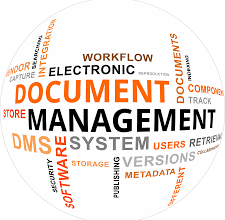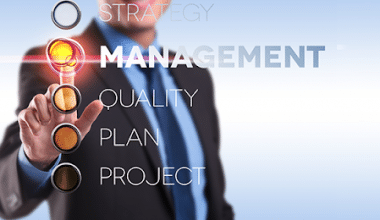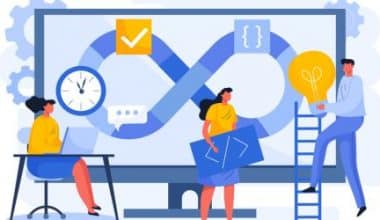As far as employee development goes, it is the responsibility of the individual employee to learn and grow on the job as much as it is for the HR manager. Every organization should have a development plan that encourages the growth of its employees, which in the end would have a positive impact on the general well-being of the business. This article contains everything you need to know about the steps involved in the employee development plan.
Employee Development Plan
An employee development plan serves as a guide that is used to match employee and company goals while also specifying precise steps toward each goal’s attainment. It is an interactive, concrete list of tasks that an employee takes to achieve their professional objectives. Employee development plan frequently includes both short- and long-term goals for which the individual will work. Goals could include learning new skills, obtaining a certification, or being promoted.
An employee development plan is a useful tool for assisting employees in growing both personally and professionally. Career development programs assist teams in achieving organizational goals while keeping employees motivated, productive, and successful. Plans with clear milestones assist employees in honing their talents, becoming more productive, learning new things, and expanding their knowledge and networks.
Read Also Advantages of Staff Development
What are Examples of an Individual Employee Development Plan?
As far as employee development goes, it is the responsibility of the individual employee to learn and grow on the job as much as it is for the HR manager. The individual employee can take the sole responsibility for developing himself both personally and professionally by utilizing the employee development plan steps/examples below:
- Obtain a variety of sales certifications
- Obtain management certification.
- Apply for employment as a sales manager.
- Increase sales numbers year after year.
- Improve your verbal and written communication abilities.
How Do You Create an Employee Development Plan?
In a nutshell,
- Clarify your business objectives.
- Determine the company’s long-term business objectives.
- Discuss the employee’s career objectives with them.
- Create an Individual Employee Development Plan with your employees.
What Are the Five Components of a Development Plan?
Employee development is a continuous activity for both staff members and managers. And there are other things for employees and supervisors to consider when developing a professional development plan.
The following are the components of the development plan
#1. Evaluation:
If you are serious about professional progress, you must first and foremost be honest with yourself. Take stock of your skills and identify areas for growth as well as new skills that will prepare you for the next step in your career.
#2. Goals
Setting your goals is the most personal aspect of building your own professional development strategy. Your goals, however, may vary as your life and hobbies change. It’s therefore, more vital to work toward something you truly desire than to cling to a goal you don’t care about.
Finally, strive high but be realistic. Be adaptable and don’t be hesitant to adjust your professional growth plan to accommodate changing goals.
#3. Materials.
Managers and mentors can help you create a personal development plan by providing you with the resources you need to achieve your goals. Request that your supervisor be precise about what it will take to achieve each goal or milestone. Also, inquire with your mentor about the talents they were building at the same time of their career.
On the other hand, more research may be required when developing a professional development plan for staff members, especially if you are in charge of a diverse workforce.
Here are some places to look for resources for employee upskilling:
- Speak with senior personnel in the same field or on a similar career path.
- Try learning courses, which feature a number of filters to help you find relevant training for various jobs.
- Employees should attend job-specific conferences. Even if they don’t gain new skills right away, they’ll most likely leave with greater resources for furthering their education.
- Attend the aforementioned conferences with your team. It is not only an opportunity for research, but also for shared experiences that lead to better knowledge and empathy.
- Use a consulting business that specializes in staff training, upskilling, and reskilling.
#4. Strategy
SMART goals are an excellent tool for defining the tiny steps that must be taken in order to achieve the larger goals outlined in a professional or employee development plan. SMART is an acronym that stands for Specific, Measurable, Attainable, Relevant, and Time-Based. When these ideas are combined, they form a framework that allows you to devote time and resources toward growth.
Read Also: SMART GOALS: How To Set Them With Examples
#5. Evaluation:
Employees’ professional development plans should be reviewed at least once a year. Reviewing your personal development plan once or twice a year is a good choice because it corresponds to the speed of most corporate evaluations.
What Are the 6 Cs of Professional Development?
The 6 cs of professional development are:
- Communication
- Critical thinking
- Collaboration
- Connectivity
- Culture
- Creativity
Steps Involved in Employee Development Plan
If you want to ensure professional exposure among your staff, follow these steps to create an effective employee development plan that would immediately produce your desired result
#1. Conduct skill-check analysis
The first stage of establishing an employee development plan is determining which staff members need to be upskilled. A training requirements analysis can assist you in determining not just which abilities are lacking (or underdeveloped), but also which personnel require the most training.
This training requirements analysis places your organization’s goals at the forefront of everything that follows. All training efforts can be optimized for optimal effect by evaluating what you’re already doing well in addition to what needs improvement.
#2. Determine the best employees for future career and leadership opportunities.
Find personnel who are motivated to learn and seeking opportunities for advancement. Concentrate your early efforts on those people, not only on developing their existing talents but also on investing in leadership and management training when they are ready.
Here’s the interesting part—Employees who are not so sure about whether or not to continue with your organization will be more inclined to stay when they perceive you are dedicated to assisting them in achieving their personal and professional objectives. This allows you to keep your most skilled personnel!\
#3. Make use of personnel development plan templates to assist you.
The good news about employee development plans is that they don’t have to be invented from scratch. Once you’ve made the decision to proceed, there are a number of templates available to help you.
Employee development plan templates are classified into two types:
An individual employee development plan template. This allows employees to consider their personal career goals and how they might connect with those of your firm.
A succession planning template. This assists your organization in determining where it needs to employ or expand. It also articulates what resources are available (and whether they need to be expanded).
Use these as a starting point to tailor both your individual employee development plan and your company’s plan.
#4. Align with employee and corporate objectives
Once you’ve identified areas of need and people eager to advance, make sure your goals for both are in sync.
If employees aren’t involved, an employee development plan can only go so far. To develop career succession plans, consider not only your employees’ general career aspirations but also those specific to your firm.
Discussions are the most effective technique to assess employee work satisfaction. This method is also effective for determining what training employees require, what they want to learn, and how they want to get it.
#5. Assist them in growing alongside you.
Will your business still succeed if you aren’t there anymore? An employee development plan should not simply consider the developing edges of your firm that are already present. It should also take into account how your organization and industry are growing.
Where do you see your company in the next five years? How many leaders will you need to train if you expect rapid growth in the next years? Are you branching out into new sectors or service offerings? Are there people in place right now who could take your firm to the next level?
Take action today to get those wheels turning.
#6. Match the training opportunity to the learning opportunity
Now that you’ve decided to construct an employee career development plan, make sure the sort of employee training matches the task. Consider multiple delivery techniques for different aims.
Leadership training, for example, could concentrate on the following approaches:
- Job shadowing
- Coaching
- Mentorships and cross-training
Upskilling, on the other hand, employs a variety of tools to broaden your employees’ present abilities and knowledge. Consider the following for these direct, skill-based learning opportunities:
- Augmented reality
- On-the-job training
- Microlearning
When you have a strong idea of where your firm is going and which individuals will be joining you, use the correct training tool to get the greatest results.
#7. Monitor outcomes and use data to guide your actions.
You’ve spent a significant amount of time developing an employee development plan. How else will you know whether it’s effective if you don’t take the time to assess the success of your efforts and establish a strategy to address any issues that arise?
Meet with staff on a frequent basis to check how things are doing and to obtain their feedback on what they would like more (or less) of. Determine what barriers make it difficult to follow through and fix them. Determine also how to make the training time more accessible, easier, and more productive.
To wrap it up, make sure your organization has a person or team dedicated to monitoring the performance of the employee development plan. If your company is small and cannot afford a full-time employee development professional, HR professionals can assist, as can managers when they report on productivity levels or team wins.
Related Articles
- PERSONAL DEVELOPMENT GOALS: Definition, Examples and How to Set it Up
- Staff Development: Meaning, Solutions, Ideas & Academy
- HOW TO SET BUSINESS GOALS: Detailed Guide
- HR MANAGER: Definition, Duties, Salary, Skills & Qualification
References
- Indeed.com
- Edgepointlearning.com
- Avery.com






